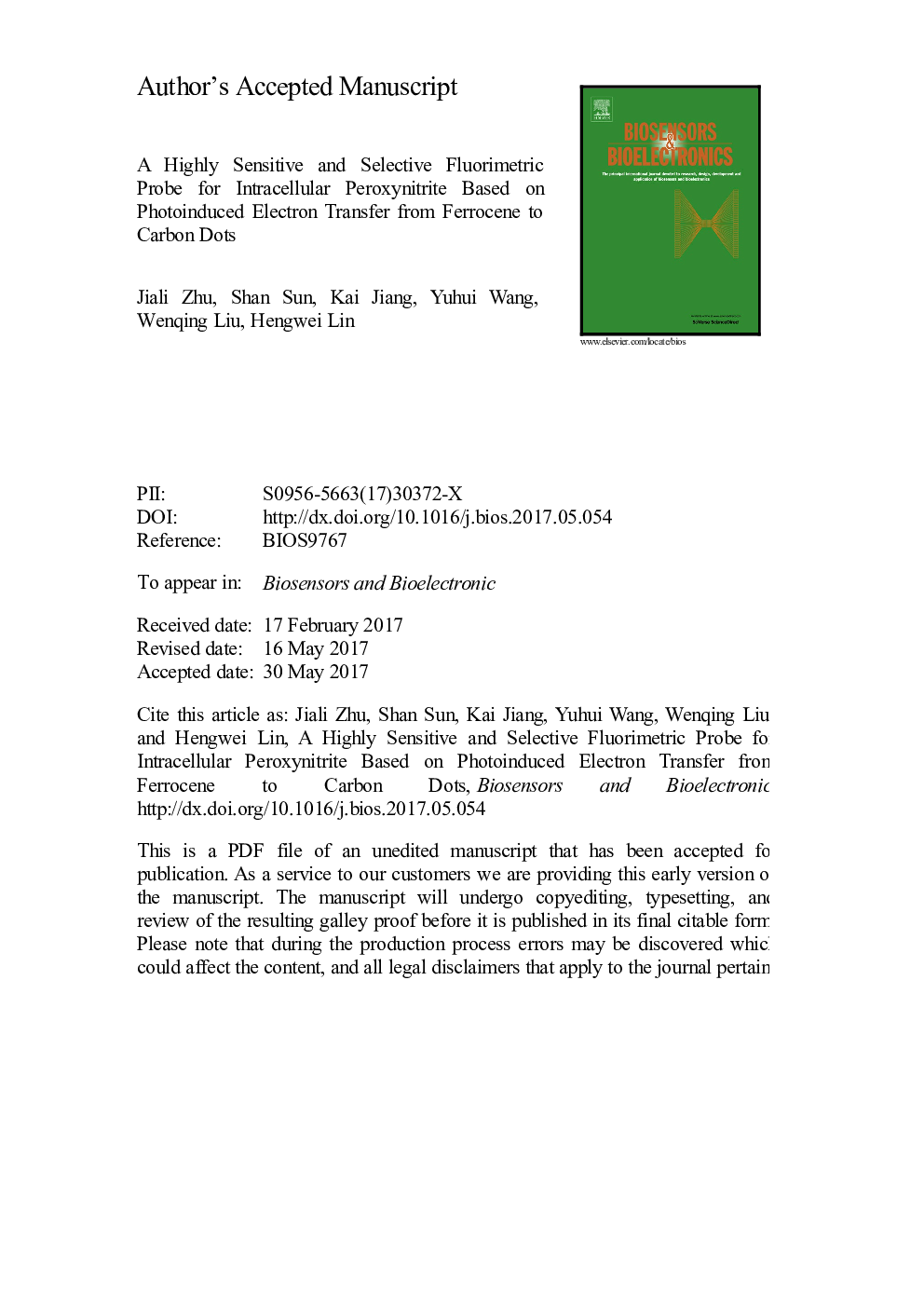| Article ID | Journal | Published Year | Pages | File Type |
|---|---|---|---|---|
| 5030980 | Biosensors and Bioelectronics | 2017 | 18 Pages |
Abstract
Herein, a highly sensitive and selective fluorimetric nanoprobe for peroxynitrite (ONOOâ) detection based on photoinduced electron transfer (PET) from ferrocene (Fc) to carbon dots (CDs) is reported. The nanoprobe (named CDs-Fc) can be facilely constructed through covalently conjugating CDs and ferrocenecarboxylic acid. Further studies reveal that the energy level of highest occupied molecular orbital (HOMO) of the CDs is lowered with the addition of ONOOâ due to its oxidation and nitration capabilities. Thus, an efficient electron transfer from Fc to the excited states of CDs could occur, leading to obvious fluorescence quenching. The fluorescence quenching of the nanoprobe was determined to be peroxynitrite concentrations dependence with a linear range between 4 nM to 0.12 μM. Thanks to the excellent optical properties of the CDs and efficient electron transfer efficiency from Fc to the excited CDs, the nanoprobe exhibits very high sensitivity to ONOOâ with a limit of detection (LOD) of 2.9 nM. To the best of our knowledge, this LOD is the highest reported value till today for the detection of peroxynitrite. Besides, the nanoprobe also shows excellent selectivity to ONOOâ among a broad range of substances, even including other reactive oxygen/nitrogen species (ROS/RNS). Finally, the nanoprobe was verified to be very low cytotoxicity, and was successfully applied for intracellular ONOOâ detection. This work would provide a promising tool for the research of ONOOâ in cytobiology and disease diagnosis.
Related Topics
Physical Sciences and Engineering
Chemistry
Analytical Chemistry
Authors
Jiali Zhu, Shan Sun, Kai Jiang, Yuhui Wang, Wenqing Liu, Hengwei Lin,
